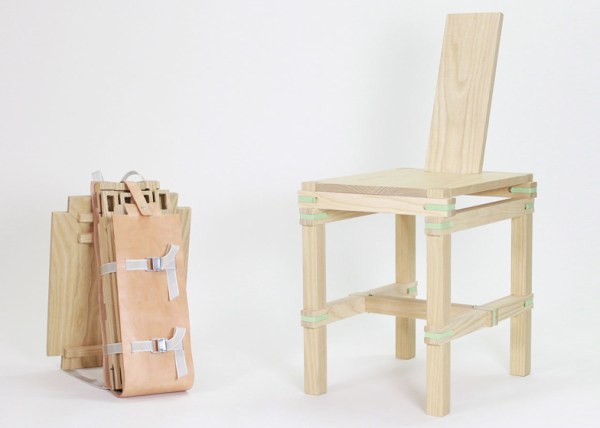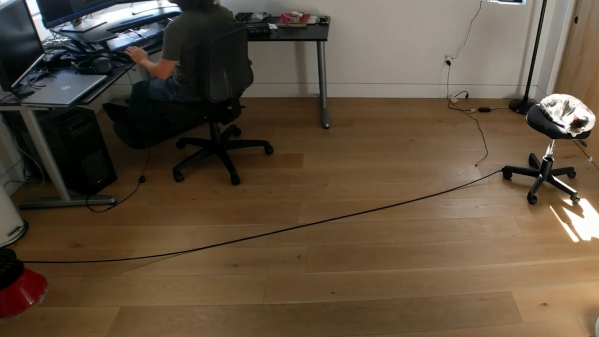Do you ever have clothes that you only wore for a few hours, so you don’t want to wash them, but it still seems icky to put them back in the drawer or closet? What if you had a dedicated place to put them instead of on your floor or piled on a chair in the corner? [Simone Giertz] has a tidier solution for you.
On top of the quasi-dirty clothing conundrum, [Giertz]’s small space means she wanted to come up with a functional, yet attractive way to wrangle these clothes. By combining the time-honored tradition of hanging clothes on the back of a chair and the space-saving efficiency of a Lazy Susan, she was able to create a chair with a rotating rack to tuck the clothes out of the way when not wearing them.
The circular rack attached to the chair orbits around a circular seat and arm rests allowing clothes to be deposited on the chair from the front and conveniently pushed to the back so they remain out of sight and out of mind until you need them. The hardware chosen seems to be pretty strong as well given the number of items placed on the rail during the demonstration portion of the video. We also really like how [Giertz] challenged herself to “CAD celibacy” for the duration of the build to try to build it quick.
If you want to see some other clever furniture hacks, how about repurposing the seats from an old subway, or hacking IKEA furniture to be more accessible?
Continue reading “Uncanny Valley Of Clean Conquered By Clever Chair”








![An American-made Windsor chair from the turn of the 19th century. Los Angeles County Museum of Art [Public domain]](https://hackaday.com/wp-content/uploads/2019/05/Windsor_Arm_Chair_LACMA_54.80.jpg?w=280)










